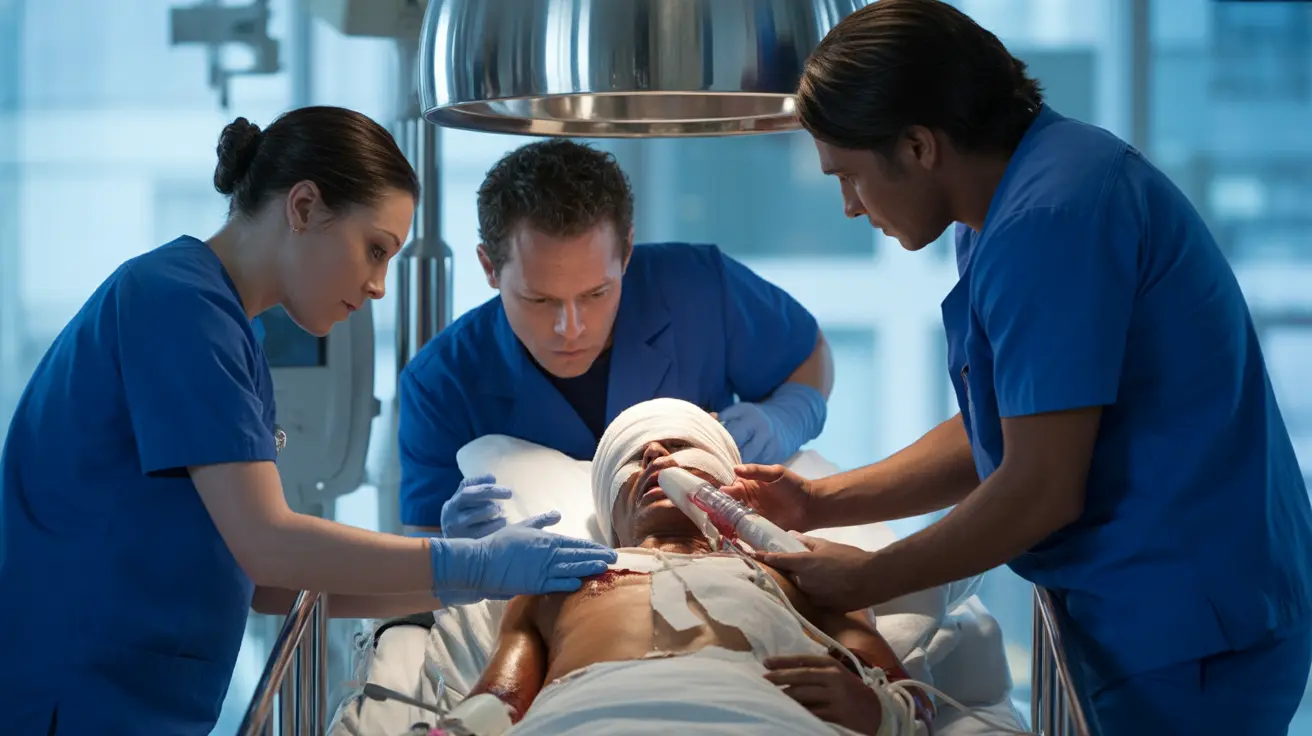The tragic car accident that claimed actress Anne Heche's life in August 2022 brought attention to the devastating impact of traumatic brain injuries and the complex medical challenges that can arise from severe accidents. This comprehensive analysis examines the medical aspects of her injuries and their implications for public health and safety.
The Sequence of Critical Injuries
Anne Heche sustained multiple life-threatening injuries when her vehicle crashed into a Los Angeles residence. The primary injuries included severe trauma to her brain, significant burns throughout her body, and complications from smoke inhalation. These combined factors created a complex medical emergency that ultimately proved fatal.
Traumatic Brain Injury Impact
The crash resulted in an anoxic brain injury, which occurs when the brain is deprived of oxygen. This type of injury can cause rapid and severe damage to brain tissue, often leading to irreversible consequences. In Heche's case, the brain injury was particularly severe due to the high-speed impact and subsequent complications.
Burn Injuries and Respiratory Complications
The fire that engulfed the vehicle after impact caused severe thermal burns to Heche's body. These burns were classified as significant thermal injuries, requiring immediate and intensive medical intervention. The combination of burns and smoke inhalation created a particularly dangerous situation, as respiratory damage can compound the effects of other injuries.
Effects of Smoke Inhalation
- Direct damage to lung tissue
- Reduced oxygen delivery to vital organs
- Potential chemical injuries from toxic substances in smoke
- Increased risk of respiratory failure
The Role of Emergency Response
The critical nature of Heche's injuries highlighted the importance of rapid emergency response in severe accident cases. Emergency medical teams had to address multiple life-threatening conditions simultaneously, including:
- Immediate stabilization of vital signs
- Management of traumatic brain injury
- Treatment of severe burns
- Respiratory support
Legacy in Organ Donation
Despite the tragic outcome, Heche's decision to be an organ donor helped save others' lives. This aspect of her story highlights the vital importance of organ donation in modern medicine, particularly in cases of fatal traumatic injuries where organs may remain viable for transplantation.
Safety Implications and Prevention
This incident underscores the importance of vehicle safety and responsible driving. Key preventive measures include:
- Using proper safety restraints
- Maintaining safe driving speeds
- Avoiding impaired driving
- Regular vehicle maintenance
- Following traffic safety rules
Frequently Asked Questions
What injuries did Anne Heche sustain in her car accident?
Anne Heche suffered severe traumatic brain injury, extensive thermal burns, and significant damage from smoke inhalation. The combination of these injuries, particularly the anoxic brain injury from oxygen deprivation, proved fatal.
How did smoke inhalation and thermal burns contribute to Anne Heche's death?
The smoke inhalation damaged her respiratory system and reduced oxygen delivery to her brain, while the severe thermal burns caused significant tissue damage. These factors combined to create a critical medical situation that compromised multiple organ systems.
What is the role of organ donation after fatal traumatic brain injuries like Anne Heche's?
Organ donation after fatal traumatic brain injuries can help save multiple lives. In cases where other organs remain viable despite fatal brain injury, donation allows for the preservation and transplantation of life-saving organs to recipients in need.
Was substance use a factor in Anne Heche's car crash and resulting injuries?
Toxicology reports indicated the presence of substances in her system at the time of the crash. This factor likely contributed to the circumstances leading to the accident, highlighting the dangers of impaired driving.
What safety precautions can help prevent severe injuries in high-speed car accidents?
Essential safety precautions include wearing seatbelts, following speed limits, avoiding impaired driving, maintaining vehicle safety systems, and staying alert while driving. Modern vehicle safety features also play a crucial role in injury prevention.




